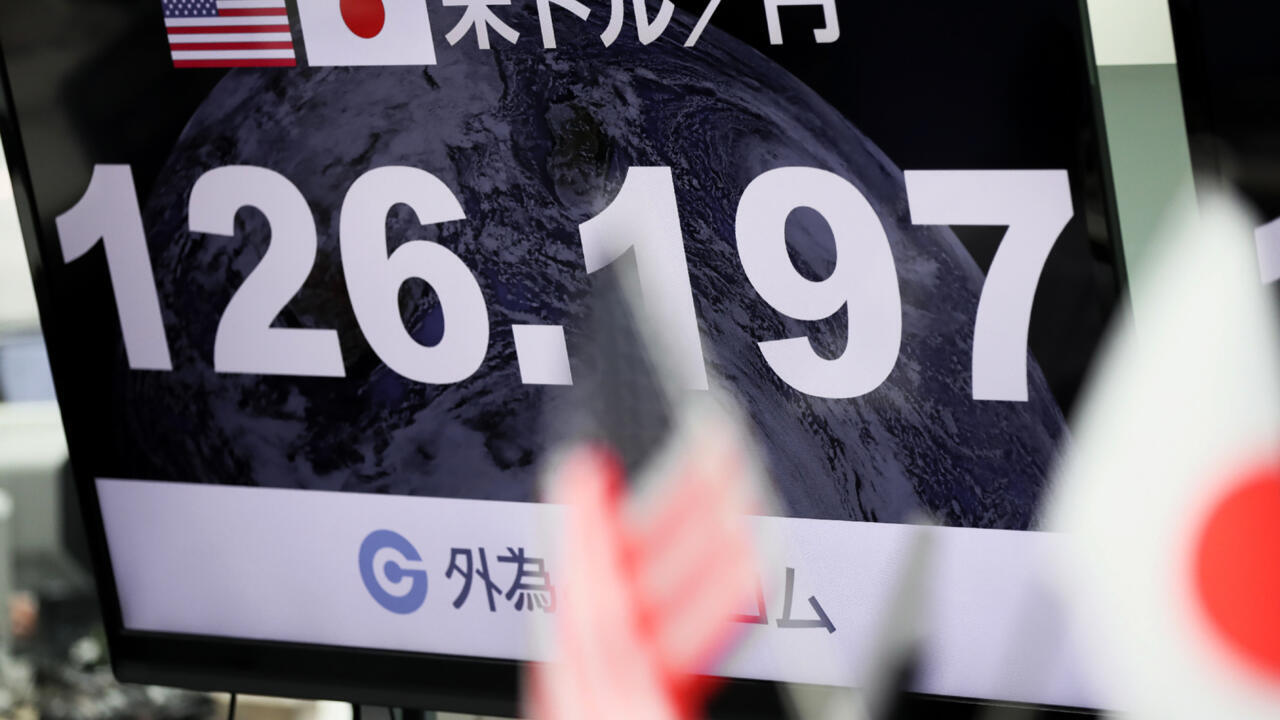A dollar traded for 126.05 yen around 10:15 a.m. GMT after having briskly crossed the 125.86 yen mark a few hours earlier, a first since 2002.
The yen has been declining against the dollar since early 2021, when US Treasury yields began to rise sharply, amid a strong rebound in US growth and the start of an acceleration in inflation in the country.
After losing 10% of its value against the greenback last year, the yen has again dropped nearly 9% since the start of 2022.
Its depreciation has increased further in recent weeks, faced with the prospect of even more aggressive monetary tightening by the American Federal Reserve (Fed) than initially anticipated to counter inflation at its highest in 40 years in the United States.
Against the current of the other major central banks, the Bank of Japan (BoJ) is maintaining its ultra-accommodating monetary policy, considering that the macroeconomic conditions are still not met in Japan to tighten it.
BoJ Governor Haruhiko Kuroda had also reaffirmed this course on Wednesday, which seems to have caused the yen's new bout of weakness.
An ineffective "safe haven" effect
The Japanese economy is still rocking after the initial shock caused by the Covid pandemic in 2020, but inflation is much more subdued there than elsewhere (barely 0.6% excluding fresh produce in February), even if this is also accelerating now, due to soaring energy prices.
Behrouz MEHRI AFP
The yen is traditionally a "safe haven" in the event of severe market turbulence.
Because despite its abysmal public debt (more than 260% of GDP according to the IMF), Japan appears to be a country with strong backs: for three decades it has been the world's leading creditor, with a net wealth abroad that weighed 3.6 trillion dollars at the end of 2021, according to data from the Japanese Ministry of Finance.
However, this status has not operated since the start of the Russian-Ukrainian conflict because soaring energy prices are widening the trade deficit of Japan, a major importer of hydrocarbons.
This also sinks the Japanese currency, because "oil importers have to pay in dollars, and therefore they need to buy dollars", reminds AFP Masamichi Adachi, chief economist at UBS Securities in Japan.
But the BoJ continues to see the weakness of the yen as an overall positive for the Japanese economy, notably by improving the price competitiveness of the country's exports and boosting corporate profits when they convert their foreign earnings into yen. 'foreign.
This dogma, to which the government also adheres, has however begun to be debated in Japan.
Because the sharp drop in the yen combined with soaring energy prices is weakening small and medium-sized businesses focused on the national market, as well as the purchasing power of households, whose consumption is already at half mast.
Sudden movements "very problematic"
Japanese politicians are multiplying statements worrying about the rapid decline of the national currency.
“Exchange rate stability is important and we consider sudden moves undesirable,” government spokesman Hirokazu Matsuno repeated on Wednesday, after similar remarks made the day before by Prime Minister Fumio Kishida.
The headquarters of the Bank of Japan in Tokyo on June 16, 2020 Kazuhiro NOGI AFP
Japanese Finance Minister Shunichi Suzuki drove home the point by saying on Wednesday that such fluctuations were "very problematic".
However, a direct intervention from Tokyo with its foreign exchange reserves to support the yen seems difficult, according to economists.
The American authorities "see favorably the appreciation of the dollar, because their problem is high inflation", underlines Mr. Adachi.
This rules out a coordinated American-Japanese intervention, which would have a greater impact than unilateral action by Tokyo.
In addition, "it would be strange" if the Japanese government intervened by buying the yen while the BoJ keeps its ultra-accommodating policy unchanged, also noted Tohru Sasaki of JPMorgan Chase, questioned by AFP.
© 2022 AFP

